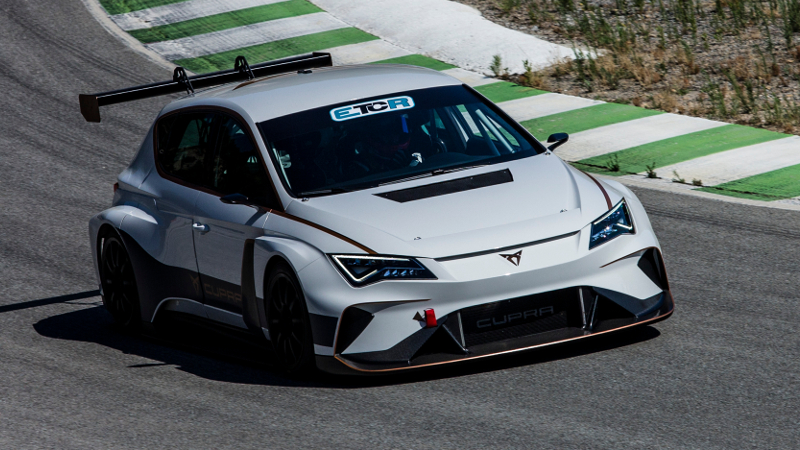CUPRA continued the testing of their new E-Racer TCR car at the Parcmotor Castellolí circuit near Barcelona this week, with development driver Jordi Gené verifying the engine output and the car’s driveability.
Just after having conducted battery tests at the Grobnik track in Croatia, Gené took to the Spanish circuit to verify the maximum output of the engines, power management and the car’s driveability.
In the process, the temperature of the batteries and other components was carefully monitored, as well as the response of the accelerator, braking and energy recovery system.
The marque will carry out further testing of the car in September, when engineers and technicians will focus on making the car even quicker and reducing the lap times of the world’s first electric touring car.
CUPRA are the only car manufacturer to-date to have committed to eTCR, with the Spanish brand hoping that further marques will enter for the inaugural season in 2020.
“With the CUPRA e-Racer we want to prove that the future of competition is electric, and that an eTCR is just as competitive or even more so than petrol-powered race touring cars,” said CUPRA Racing Director Jaime Puig.
“We trust that the results of the tests we are performing on the track will help encourage other brands and hope to see the eTCR category become a reality in 2020.”
Gené, who has previously taken race victories in the World Touring Car Championship and TCR International Series, admits that the heavier car could be better under braking, even though it is expected to out-perform a conventional TCR car in a head-to-head due to its greater power output.
“It delivers impressive acceleration, and the excellent distribution of its batteries gives it a low centre of gravity with a much better than expected driving feel,” said Gené.
“The only scope for improvement we see is with the braking, as it is obviously a heavier car and more difficult to stop with precision.”
Video: CUPRA E-Racer at Castellolí

